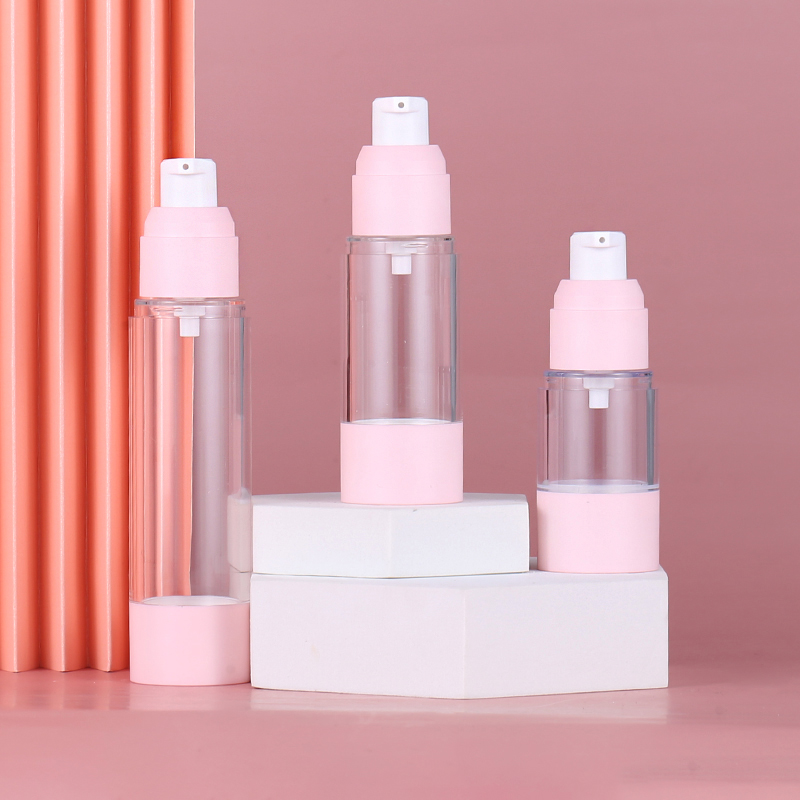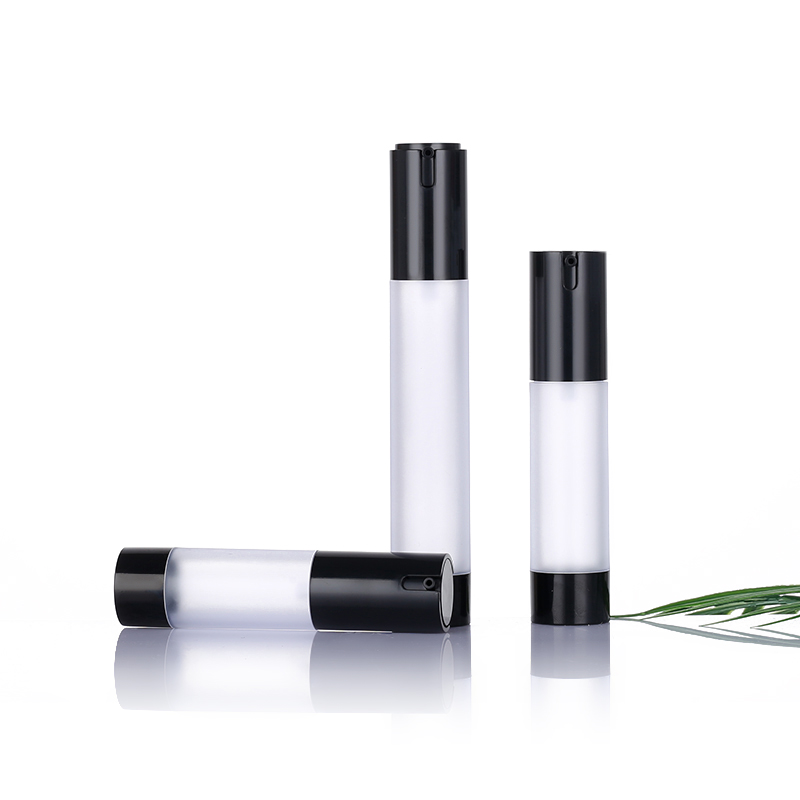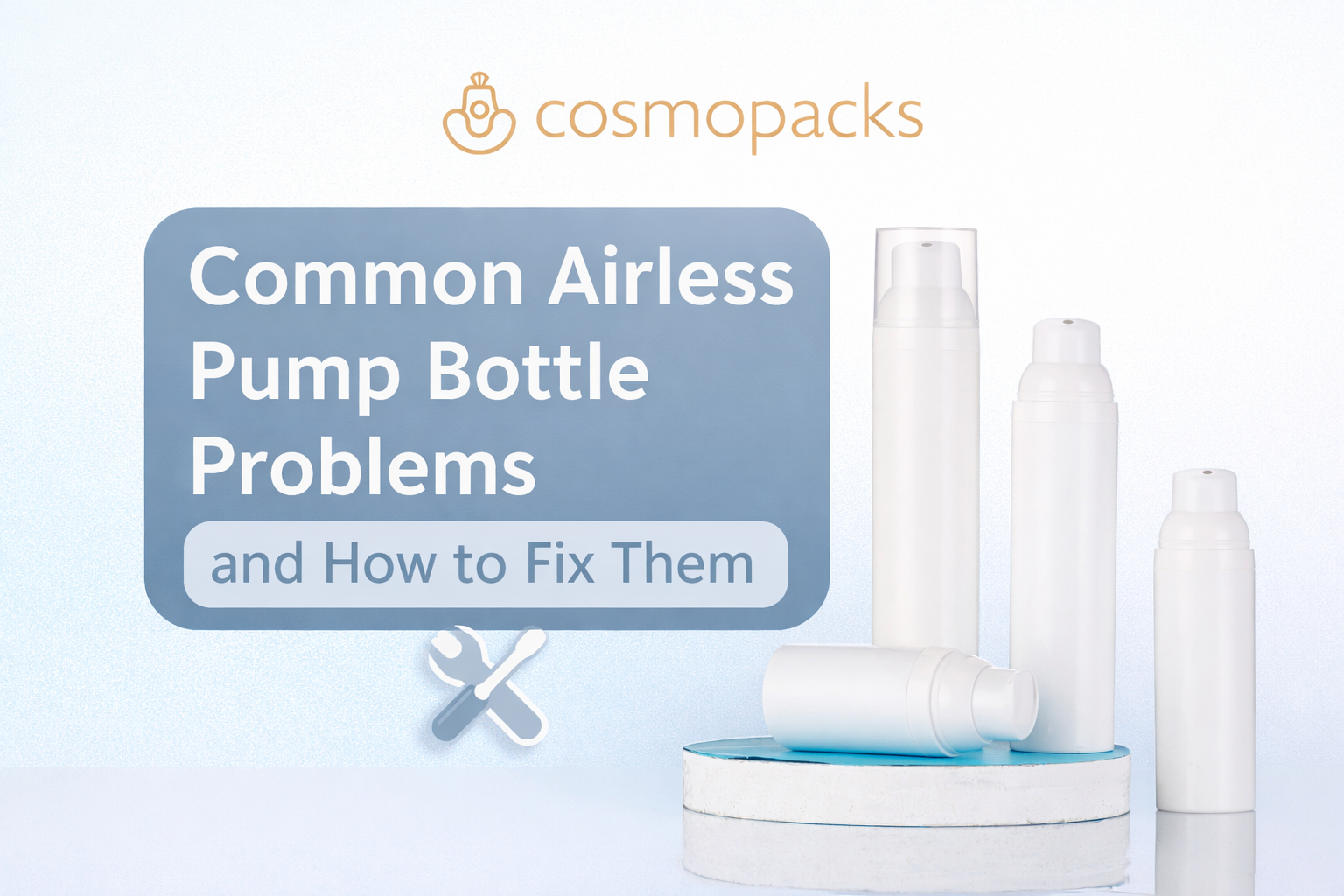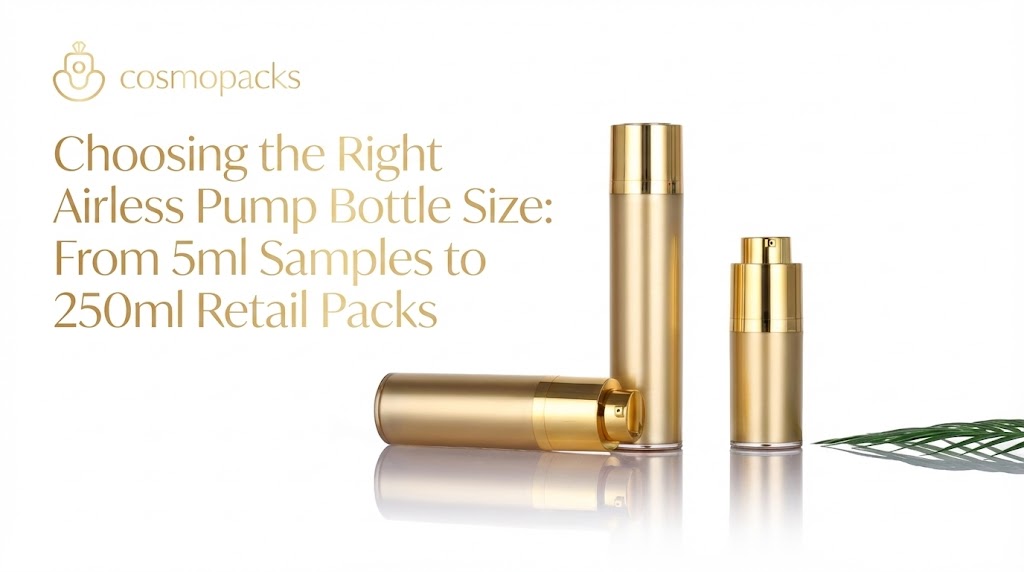Most cosmetic products use airless bottles to protect the product from exposure to air and maintain its quality and efficacy over time. Airless pump bottles are designed with a vacuum pump system that helps to dispense the product without allowing air to enter the bottle.
When exposed to air exposure, cosmetic products can oxidize and degrade, altering their texture, color, and fragrance. This can also reduce the effectiveness of active ingredients such as vitamins, antioxidants, and other skin-care ingredients.
Airless lotion bottles also help prevent product contamination from external sources such as bacteria, dirt, and other pollutants. The vacuum pump system in airless pump bottles ensures that the product is dispensed hygienically, without the need for preservatives or other chemical additives that can harm the skin.
In summary, wholesale airless pump bottles help extend cosmetic products’ shelf life, maintain their quality and efficacy, and prevent contamination.
Airless bottles also offer other advantages compared to traditional pump or squeeze bottles. For example, they allow for more precise product dispensing, which can help reduce waste and save money in the long run. Additionally, airless bottles are often more durable. They can withstand drops or other accidental damage, which can be important for travel or other situations where the bottle may be subjected to rough handling.
Airless cosmetic pump bottles can be made from various materials, including plastic, glass, and metal. Plastic airless bottles are lightweight and inexpensive, making them a popular choice for many cosmetic brands. Glass airless pump bottles are more expensive but offer a premium look and feel that can be attractive to high-end brands. Metal airless bottles are also available and offer durability and a modern aesthetic.
Airless bottles have become popular for cosmetic products because they maintain product quality, prevent contamination, and offer precise and efficient dispensing. However, it is important to note that not all cosmetic products require airless bottles, and other packaging options may be more appropriate depending on the specific product and its ingredients.
It’s worth noting that airless bottles can come in different sizes and shapes, making them versatile for various cosmetic products, such as moisturizers, serums, and creams. Some airless bottles have a transparent window that allows users to see how much product is left in the bottle, which can help track usage and reordering.
Airless bottles also offer eco-friendly benefits compared to other types of packaging. Since they prevent air exposure, they allow fewer preservatives or chemical additives, often added to prevent bacterial growth or product spoilage. This means that airless bottles can help reduce waste and environmental impact by using fewer harmful ingredients.
 In conclusion, airless bottles have become popular for cosmetic products due to their ability to preserve product quality and prevent contamination while offering precise dispensing and durability. Cosmetic companies continue to innovate and explore new packaging options that balance product quality with environmental sustainability, which is becoming increasingly important for consumers.
In conclusion, airless bottles have become popular for cosmetic products due to their ability to preserve product quality and prevent contamination while offering precise dispensing and durability. Cosmetic companies continue to innovate and explore new packaging options that balance product quality with environmental sustainability, which is becoming increasingly important for consumers.
Another advantage of airless bottles is that they are more user-friendly than other packaging types, such as jars or tubes. With airless bottles, users don’t need to worry about digging into the product with their fingers or wasting it stuck at the bottom of the container. Instead, the vacuum pump system ensures that the product is dispensed in a controlled and hygienic way, which can be particularly important for products that are applied directly to the skin.
Airless bottles can also help reduce the risk of product waste, as the pump system allows for more precise dispensing. This can be especially important for more expensive or high-end products. In addition, airless bottles can help extend the shelf life of products, which can benefit consumers who want to get the most value from their cosmetics.
However, it’s worth noting that airless bottles can also have some disadvantages. For example, they can be more expensive than other types of packaging, which can be a consideration for smaller or independent cosmetic companies. In addition, some users may find the pump system more difficult to operate or prefer the tactile experience of other types of packaging, such as jars or tubes.
In conclusion, airless bottles have become a popular choice for cosmetic products due to their ability to preserve product quality and prevent contamination while offering user-friendly dispensing and reducing product waste. While airless bottles may not be suitable for all cosmetic products, they offer a range of benefits that can be attractive to both cosmetic companies and consumers.
Another potential disadvantage of airless bottles is that they may be more difficult to recycle than other packaging types. Since airless bottles are made of multiple materials, such as plastic, metal, and pumps, they can be more challenging to separate and recycle properly. Some recycling programs may not accept airless bottles or require special recycling instructions.
To address this issue, some cosmetic companies are exploring more sustainable packaging options, such as biodegradable or compostable materials. These materials can break down naturally, reducing waste and environmental impact. However, it’s worth noting that these packaging options may have their challenges and limitations.
Airless bottles are a popular choice for cosmetic products because they preserve product quality, prevent contamination, and reduce waste. While they may have some disadvantages, they offer a range of benefits that can be attractive to cosmetic companies and consumers. As the cosmetic industry continues to evolve and become more environmentally conscious, it will be interesting to see how packaging options evolve and innovate.




